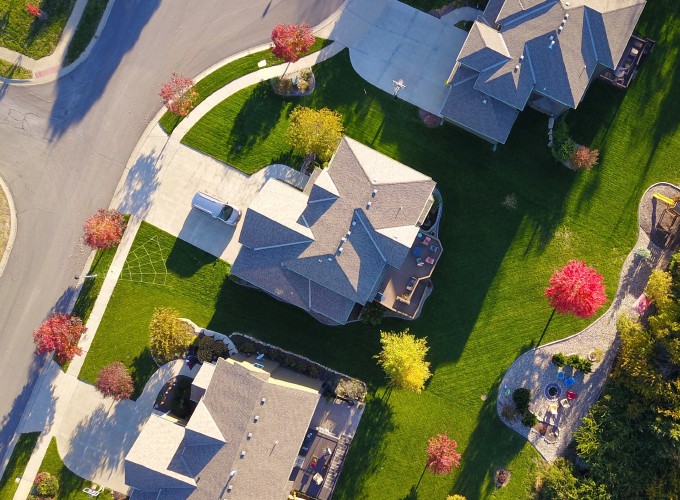NSF Link
An apparent, but untested result of changes to the urban landscape is the homogenization of cities, such that neighborhoods in very different parts of the country increasingly exhibit similar patterns in their road systems, residential lots, commercial sites, and aquatic areas; cities have now become more similar to each other than to the native ecosystems that they replaced. This research builds on the team’s prior NSF funded research on the ecological homogenization of the ‘American Residential Macrosystem (ARM)’ and specifically investigates factors that contribute to stability and/or changes in the ARM. The aim is to determine how factors that effect change such as shifts in human demographics, desires for biodiversity and water conservation, regulations that govern water use and quality, and dispersal of organisms will interact with factors that contribute to stability such as social norms, property values, neighborhood and city covenants and laws, and commercial interests. We are determining ecological implications of alternative futures of the ARM for the assembly of ecological communities, ecosystem function, and responses to environmental change and disturbance at parcel (ecosystem), landscape (city), regional (Metropolitan Statistical Area) and continental scales. Five types of residential parcels as well as embedded semi-natural interstitial ecosystems are being studied, across six U.S. cities (Boston, Baltimore, Miami, Minneapolis-St. Paul, Phoenix, and Los Angeles). Education and outreach work focuses on K-12 teachers and students and on collaborative policy efforts with city, county, and state environmental managers.
This project investigates urbanization’s impact on the ecological homogenization of the American Residential Macrosystem (ARM) in terms of plant biodiversity, soil carbon and nitrogen cycle pools and processes, microclimate, hydrography, and land cover. This similarity of ecological characteristics is driven by complex and dynamic human actions at multiple scales (e.g., parcel, neighborhood, and region) that will shape the structure and function of the ARM over 50 to 100 year time frames, with potentially significant continental scale effects on ecological processes and environmental quality. This research addresses two core questions:
What factors contribute to maintenance and change in the ARM?
While this macrosystem is a relatively homogeneous mixture of grass lawns, shrubs, trees and impervious surfaces, there is a critical need to determine how drivers of change such as shifts in human population and ethnicity, increasing desires for biodiversity and water conservation, and regulations governing water use and quality will interact with stabilizing factors such as social norms, property values, neighborhood and city covenants and laws, and commercial interests. Researchers are testing the hypothesis that although dispersal from natural and interstitial areas, climate change, and changes in homeowner knowledge will promote ecological change; institutions, norms and values will function as counteracting, stabilizing forces on these ecological dynamics. This hypothesis is being tested by evaluating the factors that motivate change and stability at multiple scales. Results are being used to produce quantitative, data-based scenarios of future land-use patterns in the ARM.What are the ecological implications of alternative futures of this macrosystem for community assembly and ecosystem function at parcel (ecosystem), landscape (city), regional (Metropolitan Statistical Area), and continental scales?
We are testing the hypothesis that management promoting nutrient- and water-use efficient and wildlife-supporting plants as well as lower inputs of water and nutrients will give rise to greater regional biodiversity across trophic levels, higher nutrient retention, lower water use, and reduced runoff and losses of soil carbon and nitrogen from residential yards at the regional scale. Five types of residential parcels that vary in management goals and intensity and embedded semi-natural interstitial ecosystems will be studied in six U.S. cities across the U.S. (Boston, Baltimore, Miami, Minneapolis-St. Paul, Phoenix, and Los Angeles), to quantify influences on ecological dynamics. This information is being linked to land use scenarios to address the regional and continental-scale impacts of these effects. Three postdocs are mentored as co-investigators on this project. The research program includes interaction with municipal decision makers focused on sustainability and add a new ‘Panel of Experts’ feature to the YardMap citizen science program developed at Cornell University.

